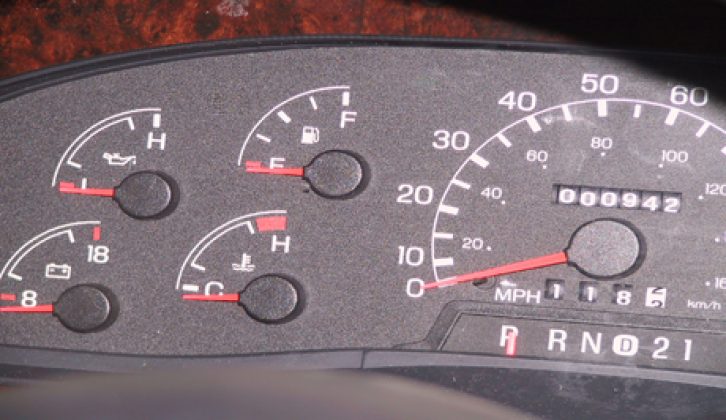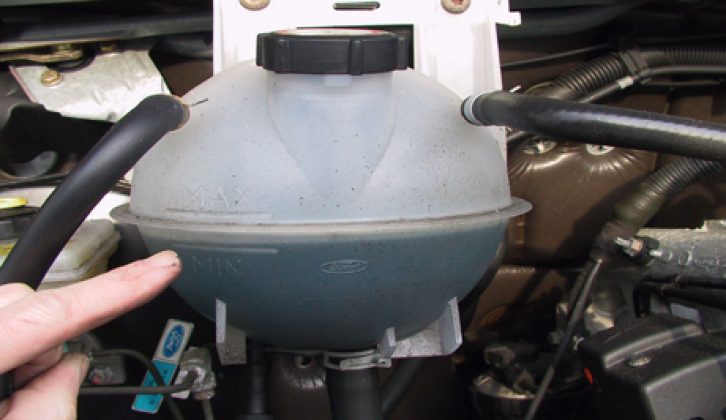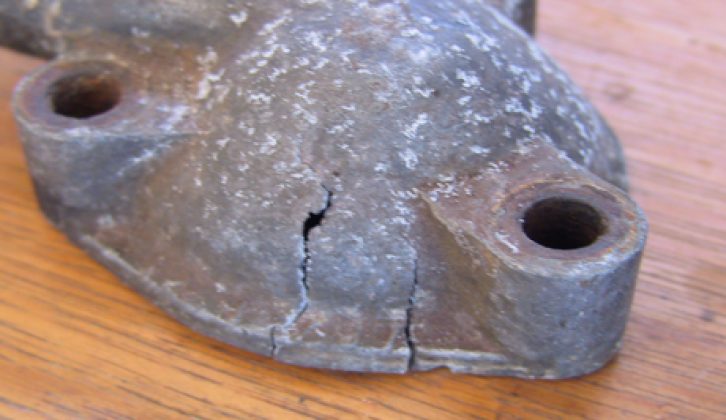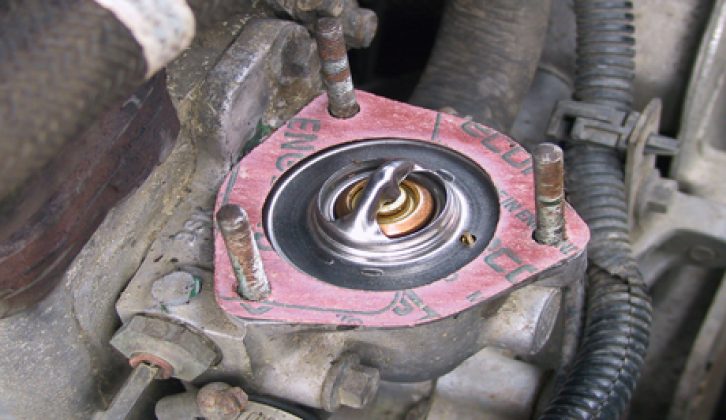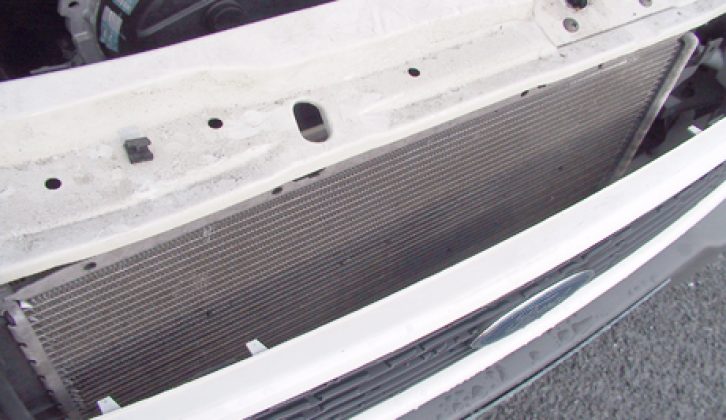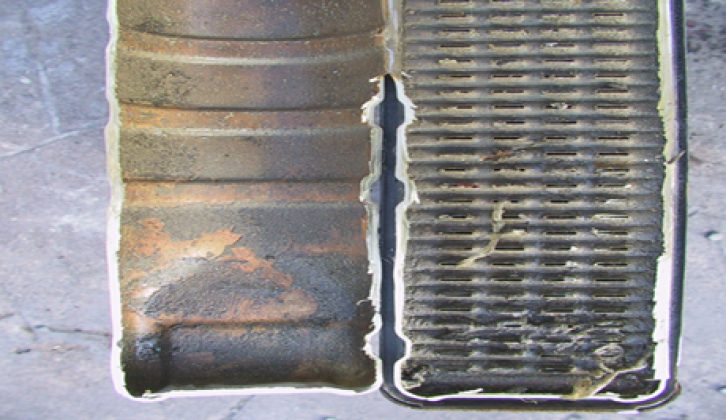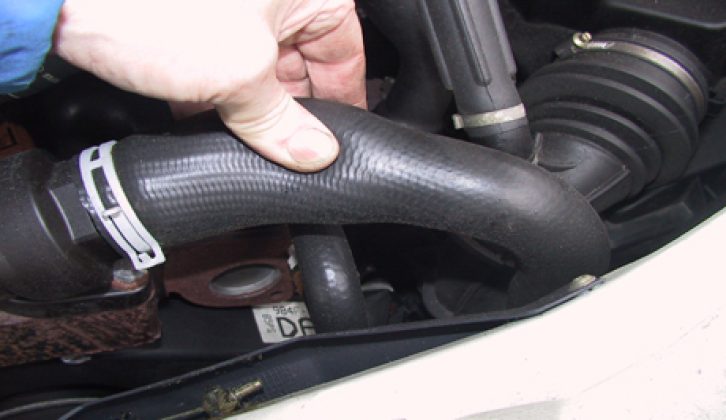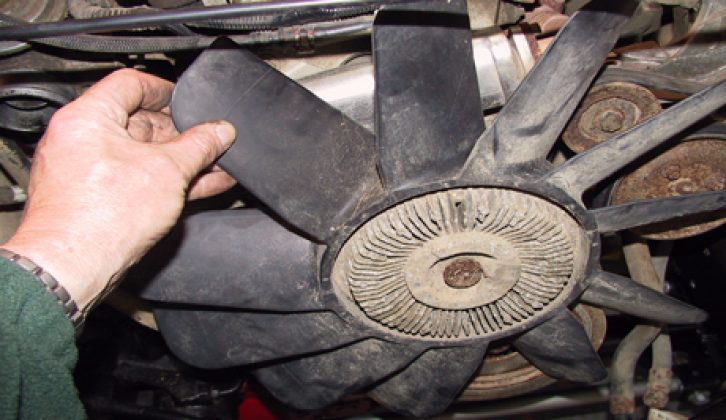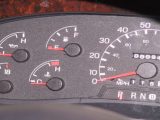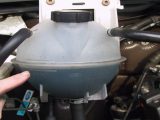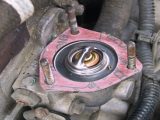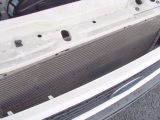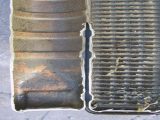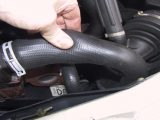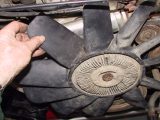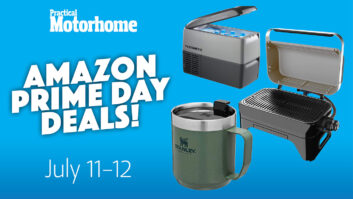There are plenty of simple checks we can make to keep the engine coolant system running trouble free. But before doing that, it’s important to understand how the system works.
The coolant inside the engine stays static while the engine is warming up. When it reaches temperature, the thermostat valve opens to allow the hot coolant to flow to the radiator where it’s cooled by the air blowing through it. When the vehicle is stationary, the cooling fan takes over the job of drawing air over the radiator.
The cooled fluid passes from the radiator to the coolant pump which circulates it through the engine again to remove more heat, and then back to the radiator. Hot coolant is also piped off to the cab’s heater which is basically another radiator. Air passing over the heater takes heat from the coolant to warm the cab. The coolant is then returned to the engine, in a continual process.
CHECKING THE SYSTEM
Much of the checks here concern looking for leaks. Some leaks will occur when the engine is hot, others when it is cold, so two checks need to be made. When checking with the engine hot, remove the ignition key and check visually without attempting to move any components, otherwise hot coolant could be released.
Expansion tank
Check the fluid level in the expansion tank weekly.
[tl:gallery index=1 size=460×277]
The dark section on this expansion tank is an internal stain, not necessarily the coolant level. Confirm by nudging the tank to see the level moves.
The tank should not need topping up between normal service intervals, so any loss of fluid needs to be investigated and fixed. If a top-up is needed, fill with the correct mixture of water and antifreeze.
[tl:gallery index=2 size=460×277]
Antifreeze contains corrosion inhibitor. Without timely renewal, aluminium parts suffer – this thermostat housing has corroded through.
Thermostat

The temperature gauge is only an indicator. If the coolant level is below its sensor, the gauge may not show that the engine is overheating. Always be alert for other symptoms.
Notice how the engine temperature gauge reacts during the engine warm-up period. Typically, the temperature indication will rise, then drop momentarily when the engine thermostat opens, before settling to its normal position. A change from the normal pattern might suggest a defective thermostat or other coolant problems.
[tl:gallery index=3 size=460×277]
A thermostat valve that sticks open will cause over-cooling and poor heater output. If stuck closed, the engine will overheat.
Radiator
Look down the front and rear faces, ends and corners of the radiator. Check through the front grille, or by detaching panels in the engine compartment. Stains are usually due to slight coolant leakage from cracks or corrosion.
[tl:gallery index=4]
Radiators can be visually checked after removing upper plastic covers or sighting through the grille, but don’t confuse with air con matrix.
Inside the radiator, corrosion deposits can build up and block the coolant passages, leading to overheating. Avoid this by replacing the antifreeze at the correct intervals with the correct type.
Radiator cut open shows narrow tubes blocked with silt and with excess gasket sealant from a botched repair.
Coolant pump
Coolant drips beneath the pump suggest the pump’s seals are failing and a new pump is needed. Check the pump’s drive belt is in good condition and correctly tensioned. If you hear a squeal under the bonnet, perhaps when starting off, it may be the coolant pump drive belt slipping, which could lead to overheating.
Hoses
Inspect all hoses for leakage, and replace any metal hose clips that are corroded. Kinked pipes will reduce coolant flow, and those abrading on metal parts could wear through. If so, slacken the clips when the coolant is cold and try twisting them to a slightly different position.
[tl:gallery index=6 size=460×277]
When the engine is cold, flex the hoses, checking for cracks and for fluid seeping from the ends.
Engine fan
Old belt-driven fans need only a check of the drive belt condition and tension.
Check viscous fans (large finned hub in the centre) with the engine hot and switched off. The blades should feel stiff to rotate, and should be free when the engine is cold.
[tl:gallery index=7 size=460×277]
Viscous fan should be free to turn when the engine is cold, stiffer when hot. Check only when ignition key is removed.
Electric fans should switch on and off automatically as needed, so it’s difficult to know whether they are working. If they are working all the time, or not running when the temperature gauge moves higher than its norm, then have the system checked.
Garage checks
If the expansion tank is losing fluid without evidence of a leak, a garage can pressurise the system to identify small leaks. It can also test the vapour in the tank for hydrocarbons which indicate cylinder head gasket failure.
Modern engines rely on temperature sensors, including coolant, to manage engine fuelling. So a defective sensor or other coolant system issue can cause engine symptoms such as misfiring and starting troubles. In such cases it makes sense to rely on a garage’s diagnostic equipment to quickly get to the root of problems.
SAFETY TIPS
• Work on the cooling and heater system only when the engine and radiator are fully cooled.
• Never remove the expansion tank cap when the engine or coolant are hot. Even when cold, release it slowly, checking for residual pressure
• Keep hands clear of electric fans when working in the engine compartment. Some may start up even with the ignition switched off
DRIVING TIPS
• Get to know the exact reading on the temperature gauge when the engine is at full temperature. You can then spot slight deviations that hint at developing problems
• Poor heater output may be a sign of engine overheating if coolant has leaked out and/or vapour locks have formed in the pipework
• If the temperature gauge rises during long climbs, but is otherwise fine, the radiator may be partly blocked inside especially after 100,000 miles
• A high temperature indication in slow traffic, but otherwise normal, suggests cooling fan failure
• If the engine takes a long time to warm up from cold, check for a seized viscous cooling fan, or a thermostat stuck open
• Light grey oil on the engine dipstick may be due to water from a cylinder head gasket leak
• Poor demisting and a smell of antifreeze suggests a leak from the heater matrix into the air flow
• On extended journeys, carry a bottle of coolant sealer as a temporary repair, a bottle of antifreeze mix for topping up, spare thermostat, gaskets, hose clips and drive belt.
